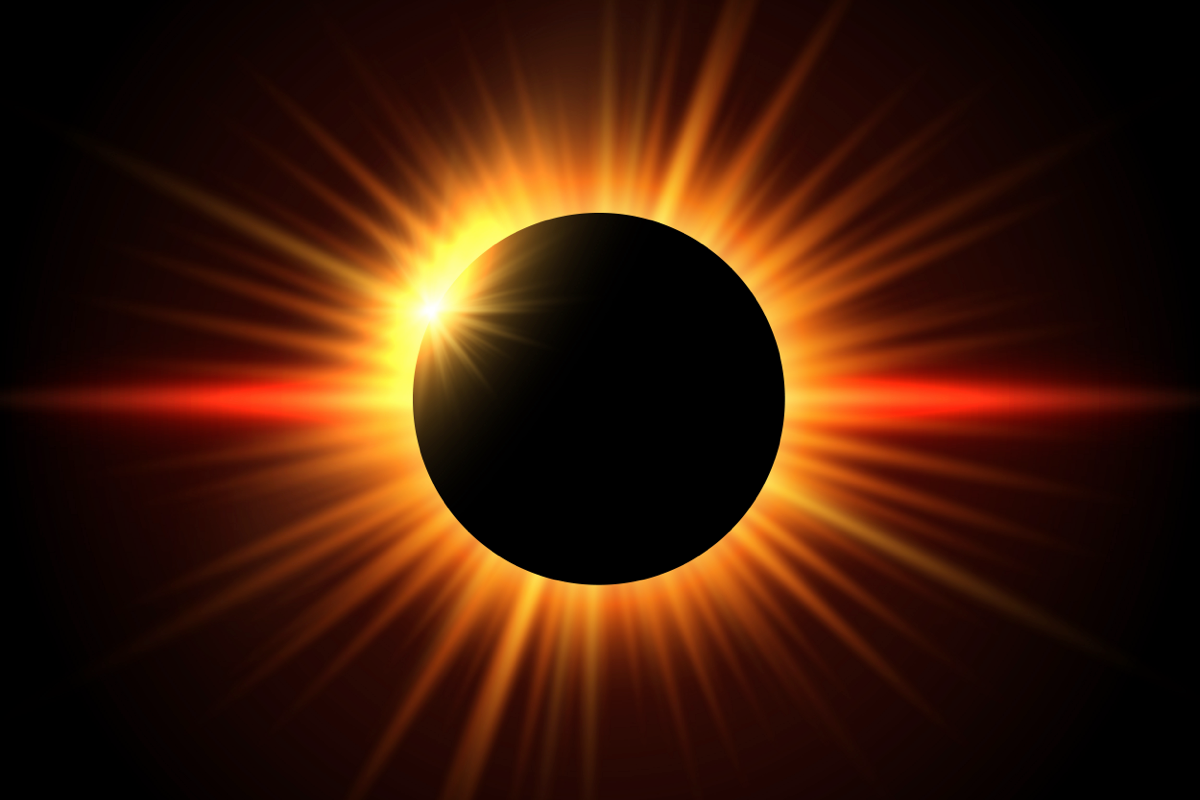
On April 8, we will experience a total solar eclipse, visible in 14 states, southeastern Canada, and Mexico. During a total solar eclipse, the Moon passes between the Sun and Earth and totally blocks our view of the Sun. And if you aren’t in the path of totality, you can view it live here. For months now, excitement and anticipation has been building across the country, and for good reason: the next total solar eclipse won’t occur for another 20 years.
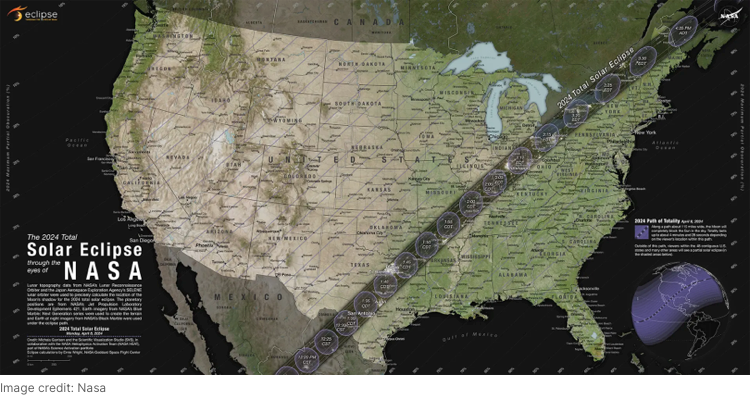
The eclipse is a must for any science curriculum—a gripping, visual, and incredibly rich real-world phenomena. But it’s also the perfect opportunity for inquiry across disciplines, from science to math to social studies and ELA.
In this post, we’ll use the eclipse phenomenon to help administrators and educators identify opportunities for collaboration between classrooms, including a host of student activities, readings, and resources. These cross-curricular lessons can be incorporated in a number of different ways:
- If their schedules align, teachers of different subjects can co-teach together or separately in their own classrooms.
- If class schedules or grade levels don’t align for co-teaching, colleagues in different disciplines can align their curricula to teach eclipse-related topics at the same time, each adding their own approach or spin on the same lesson.
- When possible, administrators can play a role by encouraging and facilitating these collaborations.
No matter what strategies work for you, the eclipse is an excellent opportunity for cross-curricular learning between science and math, social studies, and English language arts.
Science + Math
Solar eclipses are a result of the relationships between and movement of the Sun, Earth, and Moon. To fully understand and visualize this phenomenon, students need to understand scale, proportion, size, speed, and distance. That means they need to use a variety of mathematical skills from measuring, graphing, and modeling to analyzing data.
We selected a range of lessons and activities that have students combine their math and science skills to look at different aspects of an eclipse.
- Modeling Scale in a Solar Eclipse: In these three engaging activities, students visualize the relative sizes of the Earth, Moon and Sun, and where they are in relation to each other during an eclipse:
- Scaling a Solar Eclipse: An outdoor group activity that requires a large balloon, a marble, a pearl-head pin, measuring tape, and a lot of space to move around.
- Eclipse to Scale: Make a scale model of a total solar eclipse: An indoor partner activity that requires clay and basic office supplies.
- Scale in the Solar System: A Mosa Mack lesson that takes the idea of scale even further into the solar system.
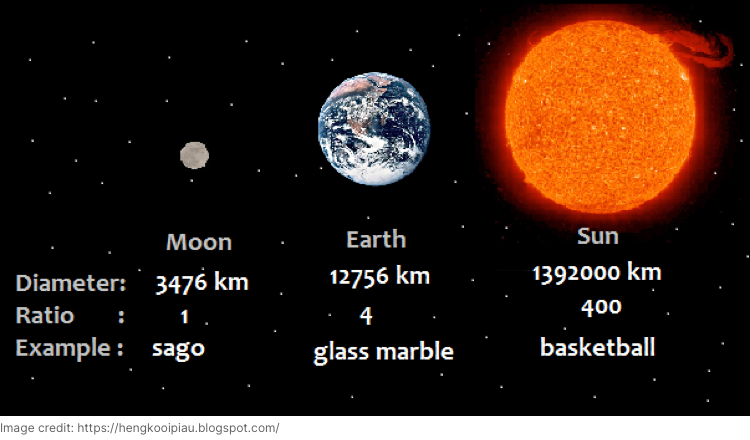
- Studying Sun-Moon Positions During Solar Eclipses: In these three related activities, students use graphs, geometry, ratios, data-gathering, analysis, and modeling by using quarters and nickels as representations of the Sun and Moon (not to scale) to understand the factors that determine whether we see a total eclipse, partial eclipse, or no eclipse.
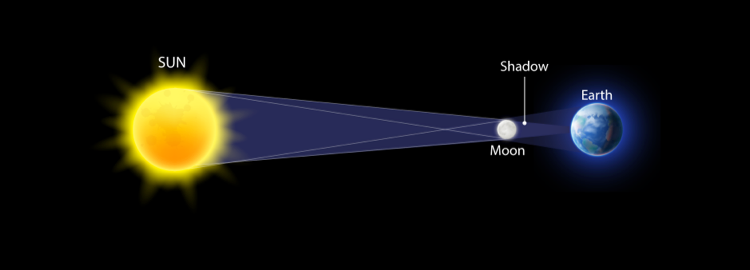
- How Will Different Locations on Earth Experience a Solar Eclipse?: In this activity from NASA, students analyze a map and data table of locations and times to determine the duration that the total eclipse will be visible to people in different locations. Also, check out NASA’s interactive Eclipse 2024 Map.
Science + Social Studies
Eclipses have been a prominent part of cultures across the world, which offers rich opportunities for students to explore key social studies themes including the role of belief systems in culture, cultural similarities and differences, and how cultures change over time. Exploring eclipses from a historical perspective also helps show how developments in science and technology can change societies over time.
-
- Eclipses in Religion, Myth, and Folklore: In the mythology of many cultures, the sun is devoured by an animal or being, whether it’s a puma (Andean culture), a giant frog (Vietnam) or a giant wolf-creature (Norse culture). This is one of many cross-cultural comparisons students might make in their exploration of eclipse-based legends and beliefs. Students could also explore how and why various cultures celebrate the eclipse, like the Navajo tradition of sitting quietly indoors during an eclipse. These readings are a great point of entry for discussion, analysis, and writing activities:
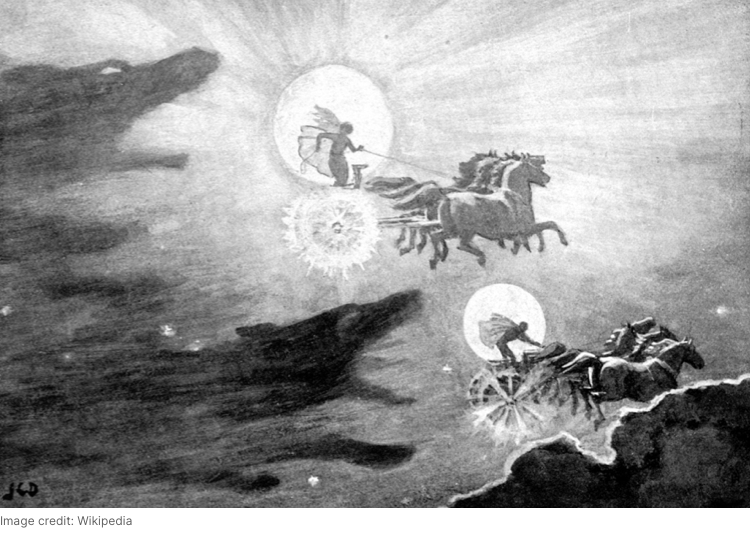
- A History of Eclipse-Predicting Technology: For 2,000 years, scientists have sought to use their knowledge of the solar system to predict when eclipses would occur. What tools, technology, and methods did they use? This fascinating account of the ancient Greeks’ eclipse-predicting “supercomputer” and later scientists’ efforts to unlock its secrets would be an excellent starting point for a historical comparison of eclipse-prediction technology.
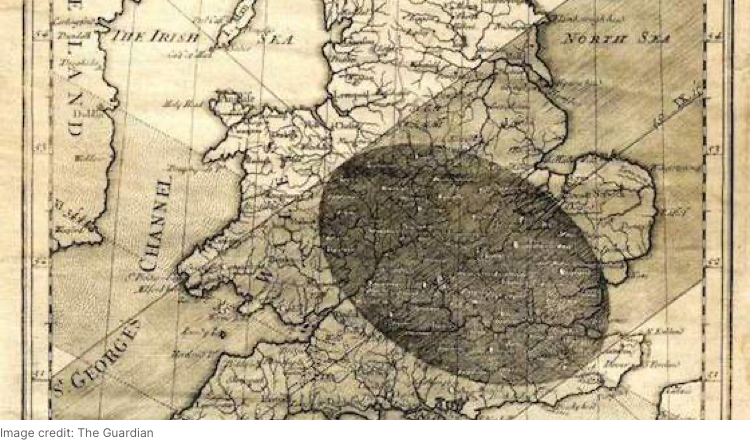
- How Observing Eclipses Has Changed Science: Throughout history, solar and lunar eclipses have allowed scientists to make important observations and discoveries about the sun and our solar system. For example, ancient Greek scientists in the 5th century B.C. looked to the sky during a lunar eclipse and noticed a round shadow moving across the moon—evidence that the Earth was spherical.
- Explore the history: The Science of Eclipses
- A hands-on activity: What Do Scientists Learn About the Universe from Observing Solar Eclipses
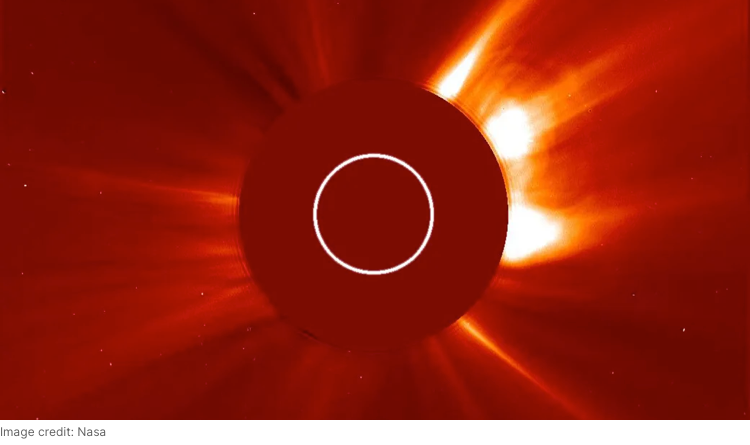
Science + ELA
Many scholars, authors, and poets have written about solar eclipses. Exploring the literature of eclipses through reading and analysis is a natural way to weave science and ELA education together, both of which emphasize skills like vocabulary-building and comprehension.
But there’s more to the ELA-science connection than reading. One of the most meaningful ways for students to learn from the eclipse is to write about, observe, and report it. This writing can take many forms, from contemporaneous journaling and note-taking to scientific reports, narrative essays, or even poetry. All these practices reinforce skills that are essential in both science and ELA.
- A Fictional Eclipse: Wendy Mass’s Every Soul is a Star is an award-winning young adult novel guaranteed to get students excited about the eclipse and astronomy. It tells the story of a friendship that develops during the summer of a solar eclipse between three middle-schoolers, one of whom is Ally—a naturalist and aspiring astronomer. Her love of science and wonder over the stars and planets is thoroughly infectious. Read the book and explore the study guide for further discussion and activities.
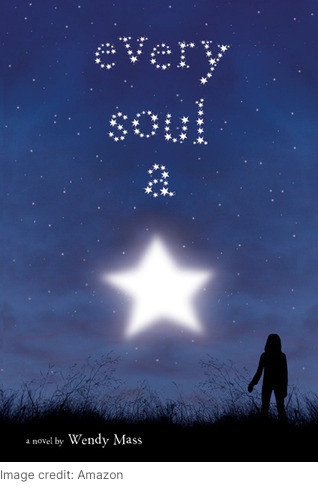
- Non-Fiction Writing About the Eclipse: To inspire a love of both natural phenomena and writing for students of all ages, look no further than naturalist/writer Annie Dillard’s personal essay about her own solar eclipse experience. Her essay is available to read online in excerpts and in full, but the most accessible form for middle-schoolers is a recorded excerpt read by the author herself. Building on this reading, science and ELA teachers can offer an array of writing activities for students: a contemporaneous journal, a subjective personal essay in the vein of Dillard’s work, a more informational narrative, or a timeline. By comparing students’ individual choices of forms and style, students learn to differentiate text genres and forms, which is an important literacy skill.

- Investigating Animal Behavior During Eclipses: In the year 1061, Islamic scholar Ibn al-Jawzi witnessed a solar eclipse and mentioned that “two hours after daybreak, the Sun was eclipsed totally. There was darkness and the birds fell while flying.” The birds fell? Could this be true?Use these recorded observations to launch an investigation into animal and insect behavior during eclipses.
- A Total Solar Eclipse Is Coming. How Will Birds and Other Wildlife React?
- How Do Animals Behave During a Solar Eclipse?
- Eclipse Soundscapes Project: During the upcoming eclipse, students can conduct their own multi-sensory observations and sound recordings to include in the open-source NASA Citizen Science Project.
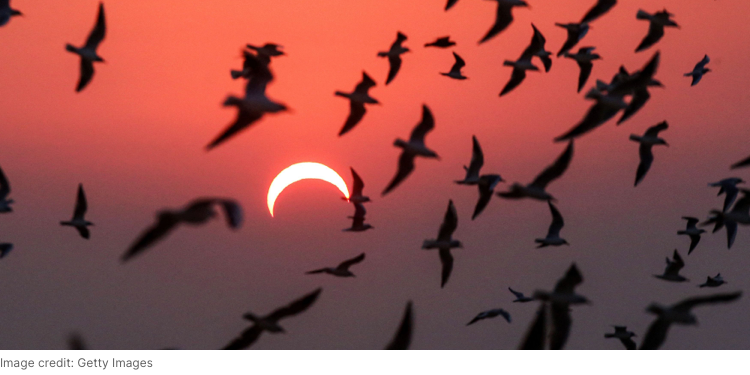
Additional Resources
- NTSA Solar Eclipse Guide for Educators: A detailed guide on how science educators can best teach the eclipse
- Great American Eclipse: A comprehensive map-filled eclipse resource, including historical and future eclipses and state-by-state eclipse information
- Exploratorium Eclipse 2024: From the Exploratorium and NASA, an immersive eclipse resource, including livestream channels, essays, and more
- Eclipse Safety Tips and Where to Buy Safety Glasses
- Guide to Seeing the 2024 Solar Eclipse
- Live-Streaming the Eclipse
- Eclipse video
- Eclipse simulator
- Eclipse impacting ionosphere
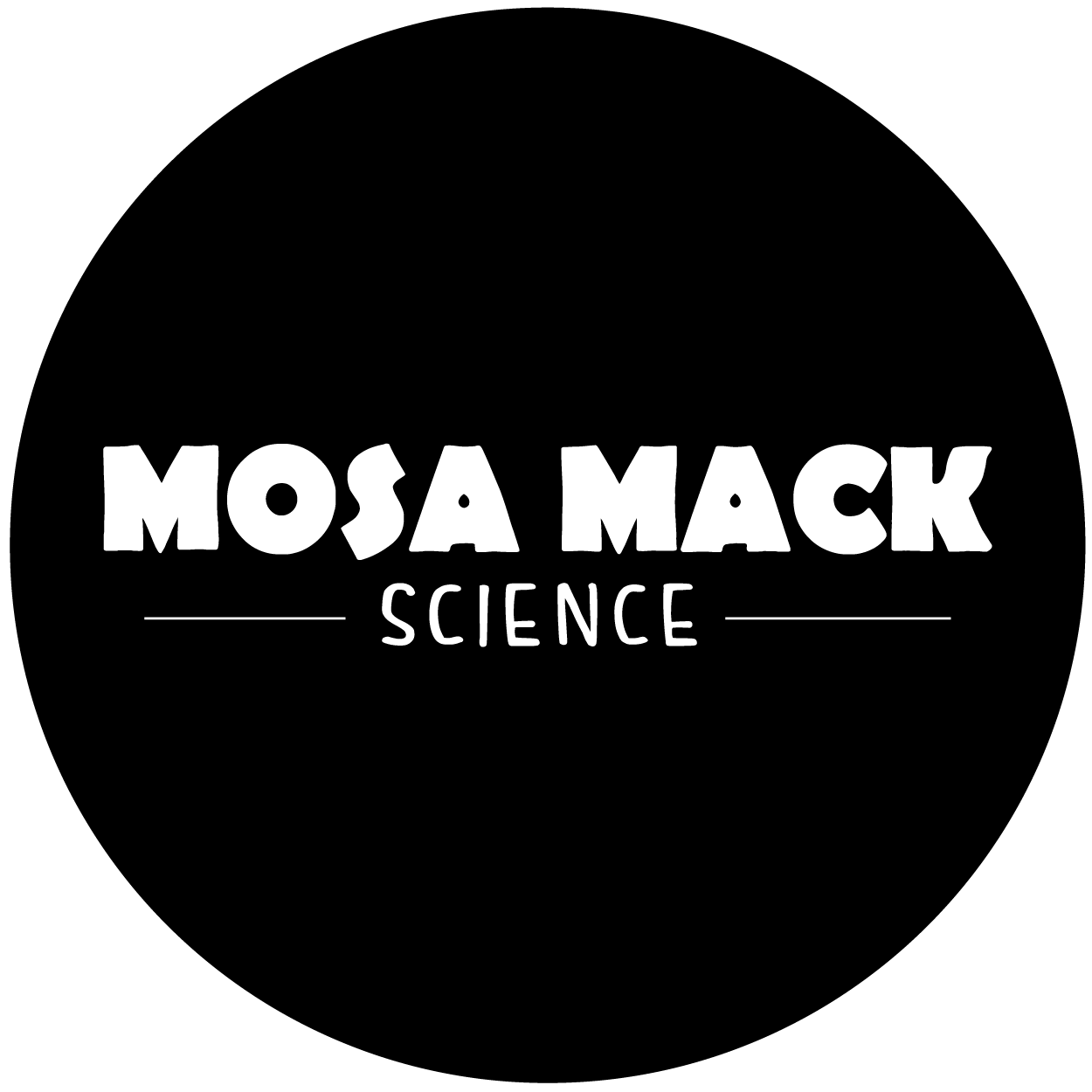
Leave a Reply